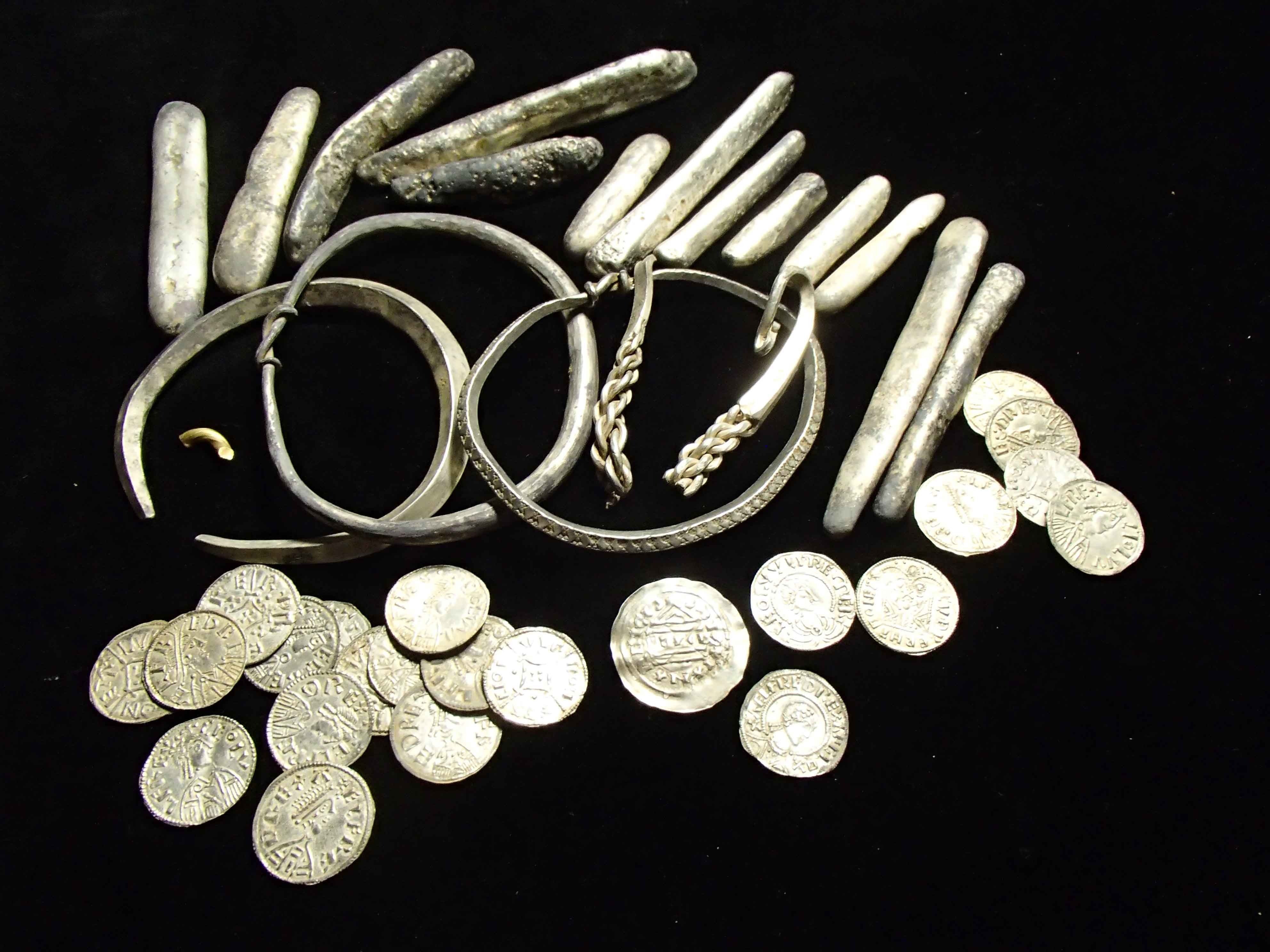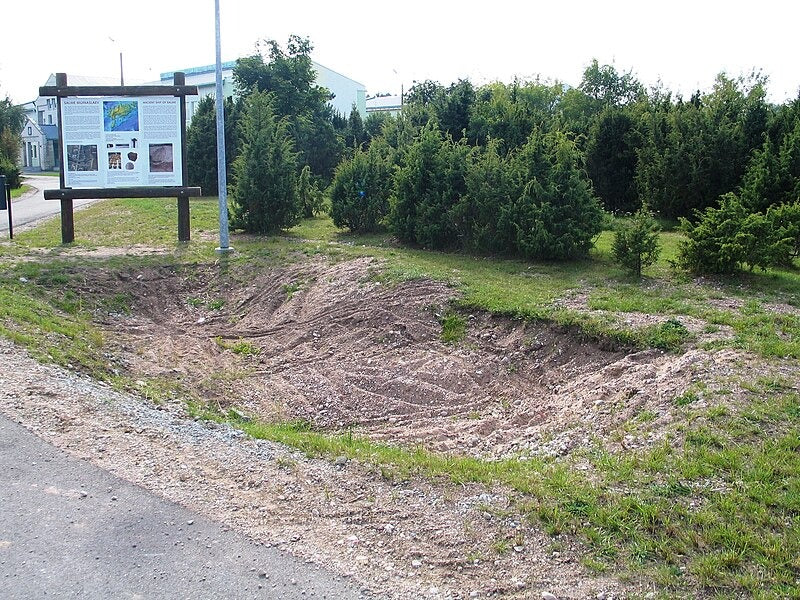
The Watlington Hoard: Unearthing Secrets of Anglo-Saxon England
In the annals of archaeological discoveries, few finds have stirred the imagination and challenged our understanding of history quite like the Watlington Hoard. This remarkable treasure, unearthed from the rich soil of Oxfordshire, has rewritten our comprehension of 9th-century England, offering a tangible link to a time of kings, conquerors, and shifting alliances.
Discovery of the Hoard

Advancements in modern technology have led to frequent discoveries of Viking hoards by amateur metal detectorists, unveiling significant historical artifacts and providing new insights into Viking activities and settlements / Photo: Paganheim
James Mather's Fateful Find
On a crisp autumn day in 2015, amateur metal-detectorist James Mather swept his device across a field near Watlington, Oxfordshire. Little did he know that his persistence was about to pay off in a way that would excite historians and archaeologists across the globe. As his detector sang out its siren song, Mather began to unearth a treasure that had lain hidden for over a millennium.
Composition of the Treasure
The Watlington Hoard, as it came to be known, is a veritable time capsule of Anglo-Saxon England. It comprises 186 coins (some fragmentary), 15 ingots, 7 pieces of jewelry including arm-rings, and a tantalizing scrap of gold. Each piece tells a story, offering glimpses into the economic, political, and cultural landscape of a turbulent era.
Historical Context

The Great Heathen Army's invasions devastated medieval England, leading to the fall of Anglo-Saxon kingdoms and the creation of the Danelaw / Illustration: Paganheim
Alfred the Great and the Great Heathen Army
To truly appreciate the significance of the Watlington Hoard, we must cast our minds back to the tumultuous 9th century. England was a patchwork of kingdoms, constantly under threat from Viking incursions. The most formidable of these was the Great Heathen Army, led by the fearsome Guthrum.
The Aftermath of Edington
The hoard was buried in the wake of a pivotal moment in English history. In 878, Alfred the Great, King of Wessex, defeated Guthrum's forces at the Battle of Edington. This victory forced the Danes to retreat northward, reshaping the political landscape of England. It's against this backdrop of conflict and change that the Watlington Hoard was consigned to the earth.
Numismatic Revelations

King Ceolwulf II of Mercia's coin, showing the Two-Emperor type, hints at his alliance with Alfred the Great / Photo: Dudley Miles
The Two Emperors Penny
Perhaps the most exciting aspect of the hoard is the presence of 13 rare 'Two Emperors' pennies. These remarkable coins depict Alfred the Great and Ceolwulf II of Mercia seated side by side, beneath a winged figure of Victory or an angel. It's a design that echoes Roman coins of the 4th century, and one that speaks volumes about the political realities of the time.
Challenging Historical Narratives
The 'Two Emperors' pennies have forced historians to reassess their understanding of the relationship between Wessex and Mercia. Traditional narratives, based on later written sources, dismissed Ceolwulf II as a mere puppet of the Vikings. These coins, however, suggest a more complex reality - one of alliance and cooperation between the two kingdoms.
Beyond Coinage

Coins, Ingots and Hacksilver included in the Hoard / Photo: Vanherdehaage, CC BY-NC-SA 2.0.
Viking Jewelry and Ingots
The hoard isn't just about coins. The presence of jewelry, particularly arm-rings, speaks to the Viking influence on Anglo-Saxon culture. These weren't mere decorations; in a world where portable wealth was crucial, such items could serve as both adornment and currency.
A Scrap of Gold
Even the smallest items can tell a big story. The single scrap of gold found in the hoard tantalizes us with questions. Was it part of a larger piece? What was its significance to the hoard's owner? In archaeology, sometimes it's the tiniest pieces that spark the biggest debates.
Dating the Hoard

The Watlington Hoard displayed at the Ashmolean Museum, Oxford University / Photo: Vanherdehaage, CC BY-NC-SA 2.0.
The Two-Line Penny
One coin, in particular, helps us pin down the date of the hoard's burial. The presence of a single 'Two-Line' type penny is crucial, as this design wasn't produced until the late 870s, after the Battle of Edington.
Connections to Historical Events
This dating allows us to connect the hoard directly to the tumultuous events following Alfred's victory over Guthrum. Was it buried by someone fleeing the conflict? Or perhaps by a merchant hoping to return in more stable times?
Geographical Significance

Approaching Watlington / Photo: Bods, CC BY-SA 2.0.
Icknield Street and Viking Movements
The location of the find, near the ancient trackway known as Icknield Street, is no coincidence. This old road would have been a key route for both Viking and Saxon forces. The hoard's proximity to this thoroughfare speaks volumes about the movements of people and armies during this volatile period.
Theories on Burial
Why bury such wealth? The hoard's location and composition fuel numerous theories. Was it the wealth of a fleeing Viking, hastily buried as Alfred's forces advanced? Or perhaps the savings of a Saxon, hidden away from marauding Danes? The earth keeps its secrets well, leaving us to speculate and wonder.
The Journey to Preservation

Acquisition by the Ashmolean Museum
After its discovery, the fate of the Watlington Hoard hung in the balance. In February 2017, it was announced that the Ashmolean Museum in Oxford had successfully acquired the hoard for £1.35 million.
Funding the Purchase
This acquisition was no small feat. It required the combined efforts of the Heritage Lottery Fund, The Art Fund (with a contribution from the Wolfson Foundation), the Ashmolean Friends and Patrons, and several individuals. Their efforts ensured that this priceless piece of history would remain in Oxfordshire, close to where it was discovered.
Implications for Historical Understanding

Silver penny of King Ceolwulf II, Mercia, 874–circa 880 AD / Photo: Classical Numismatic Group, CC BY-SA 2.5.
Reassessing Ceolwulf II
The Watlington Hoard has forced a reassessment of Ceolwulf II's place in history. Far from being a Viking puppet, the coins suggest he was a king with enough standing to mint his own currency and form alliances with other Saxon rulers.
The Formation of England
The hoard provides insight into a crucial period in the formation of England. It was after this time that Alfred and his successors began to forge a new kingdom, incorporating Mercia and eventually conquering Viking-held territories. The Watlington Hoard offers a snapshot of the complex political landscape just before this momentous change.
Conclusion
The Watlington Hoard is more than just a collection of ancient artifacts. It's a window into a pivotal moment in English history, a time when the foundations of the nation we know today were being laid. Each coin, each piece of jewelry, each ingot tells a story - of kings and kingdoms, of alliances and conflicts, of a world in transition.
As we study the hoard, we're reminded of the power of archaeology to challenge our assumptions and expand our understanding. The Watlington Hoard has forced us to redraw our maps of Viking-age England, to reconsider the relationships between key historical figures, and to reimagine the lived experience of people a millennium removed from us.
But perhaps most importantly, the hoard reminds us of the human element in history. Behind each artifact is a person - someone who valued these objects, who wore this jewelry, who buried this wealth with the intention of one day reclaiming it. In touching these objects, we reach across the centuries and make a connection with those long-gone individuals.
The story of the Watlington Hoard is far from over. As technology advances and new analytical techniques become available, who knows what further secrets it might yield? One thing is certain - this remarkable find will continue to shape our understanding of Anglo-Saxon England for years to come.
FAQs
- Who discovered the Watlington Hoard?
The Watlington Hoard was discovered by James Mather, an amateur metal-detectorist, in October 2015.
- What is the significance of the 'Two Emperors' pennies?
These rare coins show Alfred the Great and Ceolwulf II seated side by side, suggesting a political alliance between Wessex and Mercia that challenges traditional historical narratives.
- How was the hoard dated?
The presence of a 'Two-Line' type penny, not produced until the late 870s, helps date the hoard to after the Battle of Edington in 878.
- Where is the Watlington Hoard now?
The hoard was acquired by the Ashmolean Museum in Oxford in February 2017 for £1.35 million.
- How has the Watlington Hoard changed our understanding of Anglo-Saxon England?
The hoard has led to a reassessment of the relationship between Wessex and Mercia, the role of Ceolwulf II, and provides insight into the complex political landscape just before the formation of a unified English kingdom.
References
"Watlington Hoard" by The Portable Antiquities Scheme is licensed under CC BY-SA 2.0.
"Watlington Hoard: Ashmolean Museum, Oxford University" by vanherdehaage is licensed under CC BY-NC-SA 2.0.








